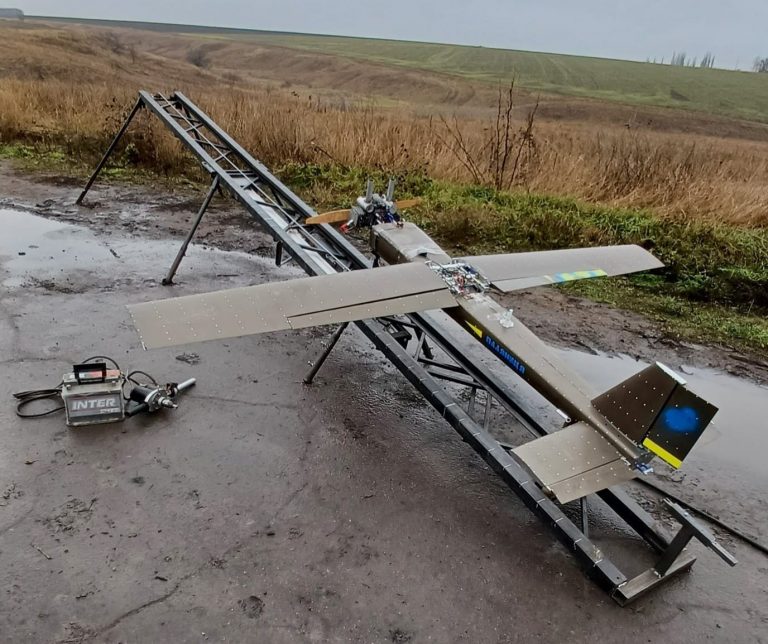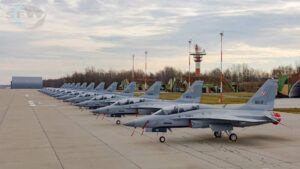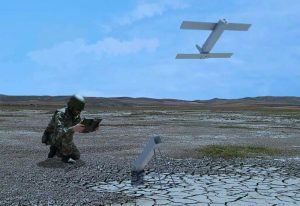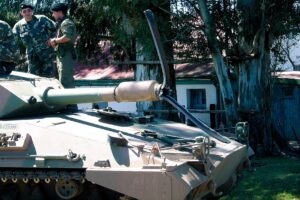Στο τελευταίο μας τεύχος Φεβρουαρίου, φιλοξενούμε μια συνέντευξη του Joe DePietro, που μας έκανε την τιμή να απαντήσει όσες μπορούσε από τις ομολογουμένως πολύ δύσκολες ερωτήσεις που του κάναμε. Οι απορίες μας ήταν σαφείς, και σας μεταφέρουμε τις απαντήσεις, χωρίς καμία επεξεργασία, στα αγγλικά. Η ελληνική μετάφραση είναι διαθέσιμη, μαζί με πολλά άλλα κορυφαία άρθρα, στην Έντυπή μας έκδοση, εδώ.
ΑΠΑΝΤΗΣΕΙΣ από τον Joe DePietro, Lockheed Martin Vice President of Small Combatants and Ship Systems
What is the maximum number of Mk41 launcher the MMSC-HN can accommodate, or the maximum number of standard weapons cells?
- The MMSC baseline design has one eight-cell MK41 VLS. A VLS cell can accommodate up to four missiles per cell, dependent on what missile is selected. The Hellenic Navy’s MMSC variant could accommodate additional MK 41 VLS cells depending on their final configuration.
Can you please give us a brief description of COMBATSS-21 advantages? Is it user compatible with CMS330?
- COMBATSS-21 is a U.S. Navy program of record and part of the Aegis Common Source Library (CSL), which is used across numerous U.S. Navy and international surface combatants.
- The Aegis CSL is migrating to become the core of the U.S. Navy’s Integrated Combat System (ICS) which will be used across all U.S. Navy and many international surface combatants. The ICS, like the Aegis CSL, is an open-architecture, adaptable system that can quickly onboard new capabilities and provides sailors with comprehensive awareness and efficient decision-making support.
- CMS330 is a Royal Canadian Navy program of record based on a Canadian Common Source Library (CSL).
- COMBATSS-21 and CMS330 are two different Combat Management Systems, but they are fully interoperable.
Can you please give us a more detailed estimation of MMSC-HN maximum speed? Reduction to 30 kts is very strange from LCS 47 kts
- The Hellenic Navy’s MMSC variant is powered by the same propulsion system as LCS. This includes two gas turbines and two propulsion diesel engines that are capable of operating in a variety of modes. The ship can operate on gas turbines, diesel, or Combined Diesel and Gas Turbine (CODAG) modes.
- LCS can travel at a top speed of 40+ knots, dependent on the configuration and environmental conditions.
- LCS has 40% of the hull open to onboard new capabilities for a single mission. The MMSC-HN design uses the 40% open space from LCS and fills it with multi-mission capabilities, the increased weight in the ship impacts the speed.
- Most missions do not require speeds above 30+ knots, and Lockheed Martin is ready to work with the Hellenic Navy to discuss how various capability and speed requirements can be achieved.
Can you please explain to us, how will HN deal with the lack of hull mounted sonar?
- The Hellenic Navy’s MMSC variant could have CAPTAS-2 Variable Depth Sonar and the MH-60R. With these two capabilities, the Hellenic Navy’s MMSC would have more anti-submarine warfare capability than a hull-mounted sonar could provide.
What are the possible defenses against torpedo attacks? How can the ship detect an incoming torpedo?
- The Hellenic Navy’s MMSC variant could use the CAPTAS-2 system to detect an incoming torpedo, and the SLQ-25 Nixie system to defend against torpedo attacks.
- Lockheed Martin can work with the Hellenic Navy to discuss various capability configurations.
Will MMSC accelerate fast enough after detecting an incoming torpedo, and avoid such a threat? What is the maximum speed the ship can achieve with VDS deployed and operational?
- This is not publicly disclosable information.
Can MMSC, with TRS-4D use SM-2 missiles? Is TRS-4D detection range long enough to take advantage of SM-2 range?
- Lockheed Martin can work with the Hellenic Navy to discuss various configurations and the benefits and drawbacks of a variety of options.
- Given the difference in mission objectives between TRS-4D and SM-2, we would not recommend this configuration.
- The baseline MMSC configuration also includes a Fire Control Radar that is capable of pairing with many different missile configurations.
Is it possible to install a laser system like HELIOS in MMSC-HN, if HN decides to do so?
- MMSC is adaptable and can flex to accommodate various customer needs. We have already validated the ability to integrate a Laser Weapon System into our hull form. As with all systems and capabilities onboarded, there are space, weight and power tradeoffs that must be considered.
In the age of almost complete interoperability between platforms across the battlefield which will be the capabilities of MMSC?
- The Hellenic Navy’s MMSC variant includes the COMBATSS-21 Combat Management System (CMS). This system is part of the Aegis CSL and will be part of the U.S. Navy ICS. COMBATSS-21 is part of the most interoperable CMS available worldwide. New technologies, capabilities and unprecedented international cooperation opportunities will be available through COMBATSS-21.
Is the MMSC platform able to fire cooperatively missiles against battlefield targets? One platform (sea or air) fire the missile and another one to manage the guidance of the missile?
Μπορείτε να διαβάσετε τη συνέχεια της συνέντευξης, στο αδελφό μας site navaldefence.gr, εδώ!









